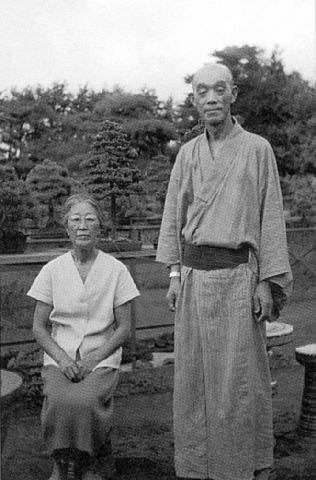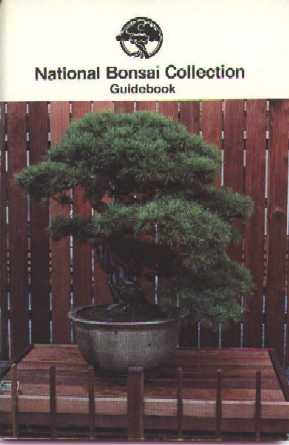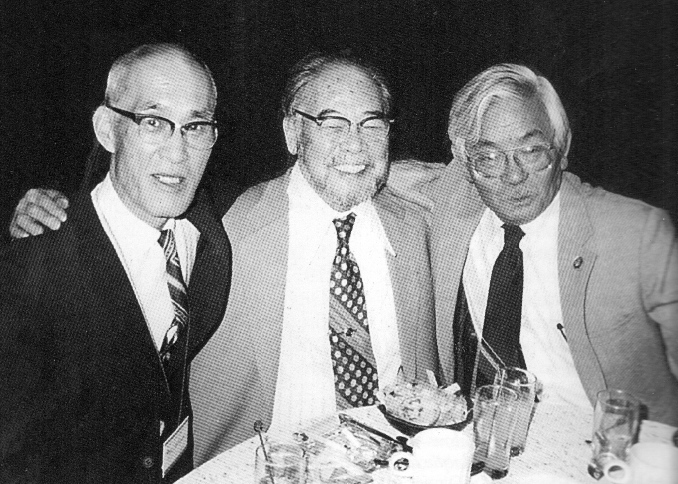YUJI YOSHIMURA
"The Father of Popular Bonsai in the Non-Oriental World," Part I
Compiled by Robert J. Baran
|
On Feb. 27, 1921, a second son (of eventually twelve children) was born to the family of Toshiji
Yoshimura. Toshiji was a leader and one of the pioneers in the modern Japanese bonsai world and one of
the top suiseki authorities in Japan. He thus would be a founder of the Tokyo Bonsai Club, Nippon Bonsai
Cooperative, and Japan Suiseki Association. His father had been a samurai and a renowned
garden designer. Toshiji studied under Yonikichi Kibe at the Taiko-en Bonsai Garden, and that was where
Yuji was born.
In 1924, the eldest son of Toshiji died in childhood, and the family bonsai tradition passed on to the three-year old named Yuji, who would one day leave his mark on the art in many places outside of Japan. That year also saw the founding of Toshiji's Kofu-en ("Garden of the Fragrant Breezes") Bonsai Nursery, located in the southwestern Tokyo suburb of Meguro, with the patronage of the Iwasaki family. By this time little Yuji had begun growing tiny plants in containers. He would often also grow young perennials and weeds in containers which his father made him hide from customers in the back areas of the garden. 1 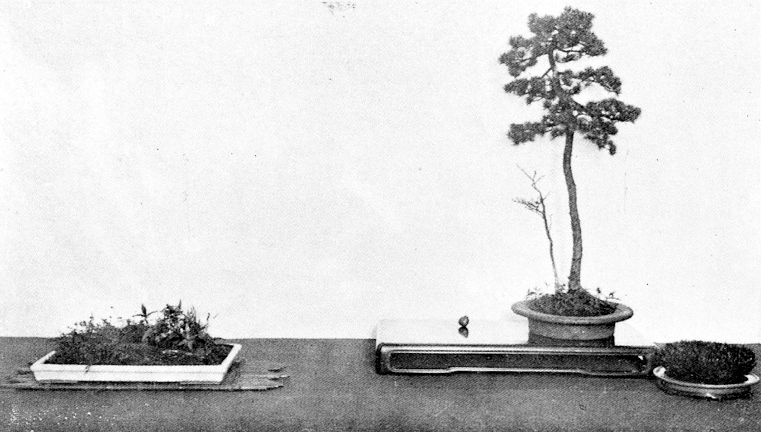
"Japanese five-needle pine, Pinus parviflora, trained in the twin trunk style and exhibited
with wildflowers and dwarf bamboo. This distinctive bonsai display was exhibited by Toshiji Yoshimura in May 1924, noting his well established style." (International Bonsai, IBA, 1989/No. 3, pg. 15) Yuji Yoshimura as a youth studied all the related traditional art forms of bonsai. His father raised him with strict discipline, which would go on to foster his unique personality and integrity. Before going to school every day, for instance, Yuji had to weed the entire bonsai garden. When he was a teenager, he often roamed the mountains, hills, fields, and lakes of the countryside. The views inspired him to use his father's lessons to compress the realm of nature into a small space. Interested in drawing, he later also studied classical music, the guitar and violin. He later used his music knowledge when he demonstrated bonsai. He also trained in the traditional arts of ikebana (popularly known as "flower arrangement" but, literally, "dancing flowers") and the tea ceremony. He was regularly taken to numerous exhibitions to help set up and dismantle. Yuji graduated from the Tokyo Horticulture School in 1938 where he had studied bonsai, bonkei, and garden art. When Yuji was 19 years old he rode his bicycle from Tokyo to Omiya Bonsai Village to visit Kyuzo Murata's Kyuka-en Bonsai Garden and purchase a special water pool suiseki. At that time, the suiseki had been appreciated for over 150 years as an art object. His family's Kofu-en Bonsai Nursery occupied him until his career was interrupted by five years of army cavalry service, mostly in China as a lieutenant. Yuji taught his troops horsemanship. He had a clever red horse which he loved and the horse died saving Yuji's life. Upon termination, he returned to his home in Japan and in 1948 established his own bonsai nursery, Naka Meguro Kofu-en, separate from his father's. He continued his grandfather's landscape gardening work. Then as one of the founders of the Nippon Young Men's Bonsai Association, he often guided foreigners through exhibits of trees and explained the details of bonsai. He made guide books in English for the Kokufu Bonsai Ten, the National Bonsai Exhibition. (See also this background on Toshiji, Aug 27 listing.) In December 1951 he met Alfred Koehn, a German diplomat who had spent years in China and Japan and was a well-known author of books on Oriental arts and crafts. Through the interactions with foreigners, Yuji seriously conceived to expand bonsai art into the world. Now, in Japan at the time, neither foreigners nor natives could take a bonsai class. The bonsai industry thought that this was a Japanese art whose arcane details Westerners could never understand, whose techniques they could not master, and whose aesthetics they could not appreciate. The Japanese tradition was for one to become an apprentice under an established master for several years of strict discipline in order to learn all this -- not a short-term proposition. Yoshimura didn't believe such thoughts and decided to open classes for foreigners who lived in Japan. The following April 23, Yoshimura and Koehn collaborated to give demonstrations and the first formal bonsai courses were made available to the public and outsiders. Over six hundred foreign visitors were taught by the pair during the next three years, among them dignitaries, military personnel, businessmen and their wives. During the decades to come, a few of these students returned to America and continued with bonsai. 2 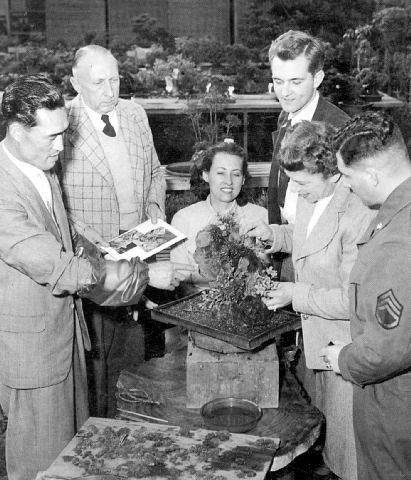
"Alfred Koehn, next to Mr. Yoshimura on his left, is explaining rock planting techniques to
Mr. Yoshimura's students in his course in 1952." (Photo by Yuji Yoshimura) (International Bonsai, 1998/No. 1, pg. 33) Yoshimura also decided to write a comprehensive bonsai book in English. He needed many scientific tests and high quality photos, which led him to a life-long study of photography. At last, in 1957, The Japanese Art of Miniature Trees and Landscapes by Yuji Yoshimura and Giovanna M. Halford was published (Rutland, VT and Tokyo: Charles E. Tuttle Co.). Halford had been one of his first students and assisted him in the English phrasing of the material. Although there had been a few earlier books in English by this time, this was the first really comprehensive, authoritative and practical work on the subject. It was received with excitement by those who were eager to learn classical bonsai. (Sixty years later, the forty-fifth printing would be made of what some have referred to as the "Bonsai Bible in English." The work has twenty-five color and 245 b&w photos and illustrations.) The book was the first to translate and classify bonsai styles still in use today around the world. (See also this background on Halford, Nov 2 listing.) Because of his unconventional practice, Yoshimura was effectively ousted by Japan's bonsai society. No one would officially talk about Yuji Yoshimura's achievement in Japan for six decades. 3
The following year, Yoshimura was invited to come to the Brooklyn Botanic Garden by its director, Dr. George
Avery. The young bonsai master had been recommended because of his skill, artistry, enthusiasm, and
excellent teaching record. His first class in America was in January 1959 at the Broklyn Botanic
Garden. While on the 1959 C. Stuart Gager fellowship grant there, Yoshimura extended his teaching and
lecturing beyond the East Coast to also the West Coast and Hawaii. He returned to teach at Longwood
Garden near Philadelphia.
4
In 1960 Yuji Yoshimura spent two months in Australia making a lasting impression, assisting the early
teachers and students of the nascent art there, and becoming Patron of one of the bonsai groups.
5
|
